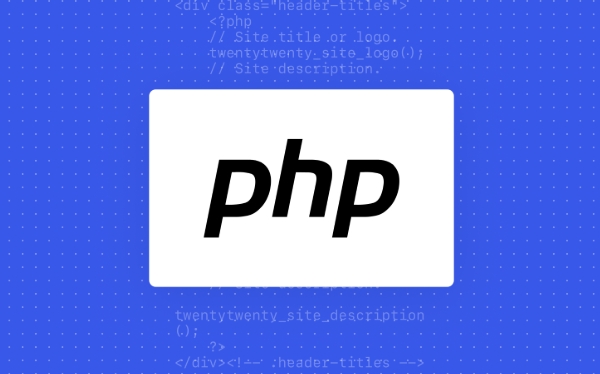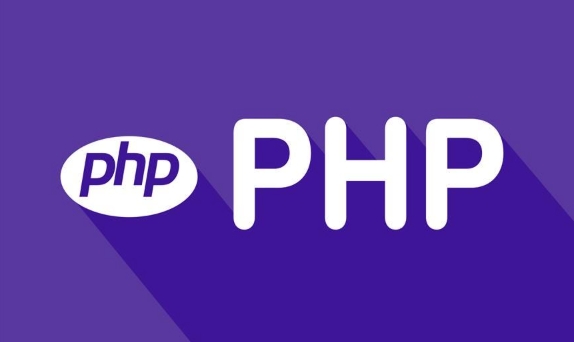How to Install PHP on Windows
The key steps to install PHP on Windows include: 1. Download the appropriate PHP version and decompress it. It is recommended to use the Thread Safe version with Apache or Non Thread Safe version with Nginx; 2. Configure the php.ini file and rename php.ini-development or php.ini-production to php.ini; 3. Add the PHP path to the system environment variable Path for command line use; 4. Test whether PHP is installed successfully, execute php -v through the command line and run the built-in server to test the parsing capabilities; 5. If you use Apache, you need to configure the PHP module and PHPIniDir in httpd.conf, and ensure that the module version matches, the path is correct and takes effect after restarting Apache. Common problems are mostly caused by path errors, module mismatch or service failure, and can be solved by checking the log.

Installing PHP is actually not difficult on Windows, you can basically do it by following the steps. The key is to select the right version, configure the environment variables, and ensure that they can cooperate with the web server you use (such as Apache or Nginx).

Download the appropriate PHP version
First, go to the PHP official website to download the Windows version of ZIP package. It is recommended to select the "Thread Safe" version. If you are using it with Apache, if you are running in FastCGI mode (for example, with Nginx), then select "Non Thread Safe".
- It is recommended to decompress to a fixed path, such as
C:\php, so that the configuration is convenient afterwards. - After decompression, remember to rename
php.ini-developmentorphp.ini-productiontophp.ini, this is the main configuration file
Configure environment variables
In order to enable the command line to use the php command directly, you need to add the PHP path to the system environment variable:

- Open System Properties -> Advanced System Settings -> Environment Variables
- Find
Pathin "System Variables" and click Edit - Add a new record, the content is your PHP directory, such as
C:\php
This way you can open the command line anywhere to execute PHP scripts.
Test whether PHP is installed successfully
You can test it with the command line first:

php -v
If you see an output like this, the instructions are already installed:
PHP 8.2.12 (cli) (built: Jul 18 2023 16:59:47) (ZTS Visual C 2019 x64) Copyright (c) The PHP Group Zend Engine v4.2.12, Copyright (c) Zend Technologies
You can also write a simple PHP file to see if it can be parsed:
<?php phpinfo(); ?>
Save it as info.php and start the built-in server with the command:
php -S localhost:8000
Open the browser and visit http://localhost:8000/info.php , and you can see the PHP detailed information page, which means there is no problem.
If you are using Apache
Then you also need to configure Apache to handle PHP requests. Mainly add the following lines to Apache's httpd.conf file (the specific path is modified according to your own situation):
LoadModule php_module "c:/php/php8apache2_4.dll" AddHandler application/x-httpd-php .php PHPIniDir "C:\php"
Notice:
- Make sure Apache's module path is correct
- The Apache module names corresponding to different PHP versions may be different. You need to confirm whether they match.
- Apache can only take effect after restarting
Basically all this is it, and it’s not a big problem to follow the steps. However, the prone to errors is usually the path not written correctly, the module version does not match, or the service is forgotten to restart. When encountering problems, you can read more logs, especially Apache's error.log and PHP error prompts.
The above is the detailed content of How to Install PHP on Windows. For more information, please follow other related articles on the PHP Chinese website!

Hot AI Tools

Undress AI Tool
Undress images for free

Undresser.AI Undress
AI-powered app for creating realistic nude photos

AI Clothes Remover
Online AI tool for removing clothes from photos.

Clothoff.io
AI clothes remover

Video Face Swap
Swap faces in any video effortlessly with our completely free AI face swap tool!

Hot Article

Hot Tools

Notepad++7.3.1
Easy-to-use and free code editor

SublimeText3 Chinese version
Chinese version, very easy to use

Zend Studio 13.0.1
Powerful PHP integrated development environment

Dreamweaver CS6
Visual web development tools

SublimeText3 Mac version
God-level code editing software (SublimeText3)

Hot Topics
 Commenting Out Code in PHP
Jul 18, 2025 am 04:57 AM
Commenting Out Code in PHP
Jul 18, 2025 am 04:57 AM
There are three common methods for PHP comment code: 1. Use // or # to block one line of code, and it is recommended to use //; 2. Use /.../ to wrap code blocks with multiple lines, which cannot be nested but can be crossed; 3. Combination skills comments such as using /if(){}/ to control logic blocks, or to improve efficiency with editor shortcut keys, you should pay attention to closing symbols and avoid nesting when using them.
 Tips for Writing PHP Comments
Jul 18, 2025 am 04:51 AM
Tips for Writing PHP Comments
Jul 18, 2025 am 04:51 AM
The key to writing PHP comments is to clarify the purpose and specifications. Comments should explain "why" rather than "what was done", avoiding redundancy or too simplicity. 1. Use a unified format, such as docblock (/*/) for class and method descriptions to improve readability and tool compatibility; 2. Emphasize the reasons behind the logic, such as why JS jumps need to be output manually; 3. Add an overview description before complex code, describe the process in steps, and help understand the overall idea; 4. Use TODO and FIXME rationally to mark to-do items and problems to facilitate subsequent tracking and collaboration. Good annotations can reduce communication costs and improve code maintenance efficiency.
 Improving Readability with Comments
Jul 18, 2025 am 04:46 AM
Improving Readability with Comments
Jul 18, 2025 am 04:46 AM
The key to writing good comments is to explain "why" rather than just "what was done" to improve the readability of the code. 1. Comments should explain logical reasons, such as considerations behind value selection or processing; 2. Use paragraph annotations for complex logic to summarize the overall idea of functions or algorithms; 3. Regularly maintain comments to ensure consistency with the code, avoid misleading, and delete outdated content if necessary; 4. Synchronously check comments when reviewing the code, and record public logic through documents to reduce the burden of code comments.
 Writing Effective PHP Comments
Jul 18, 2025 am 04:44 AM
Writing Effective PHP Comments
Jul 18, 2025 am 04:44 AM
Comments cannot be careless because they want to explain the reasons for the existence of the code rather than the functions, such as compatibility with old interfaces or third-party restrictions, otherwise people who read the code can only rely on guessing. The areas that must be commented include complex conditional judgments, special error handling logic, and temporary bypass restrictions. A more practical way to write comments is to select single-line comments or block comments based on the scene. Use document block comments to explain parameters and return values at the beginning of functions, classes, and files, and keep comments updated. For complex logic, you can add a line to the previous one to summarize the overall intention. At the same time, do not use comments to seal code, but use version control tools.
 Learning PHP: A Beginner's Guide
Jul 18, 2025 am 04:54 AM
Learning PHP: A Beginner's Guide
Jul 18, 2025 am 04:54 AM
TolearnPHPeffectively,startbysettingupalocalserverenvironmentusingtoolslikeXAMPPandacodeeditorlikeVSCode.1)InstallXAMPPforApache,MySQL,andPHP.2)Useacodeeditorforsyntaxsupport.3)TestyoursetupwithasimplePHPfile.Next,learnPHPbasicsincludingvariables,ech
 Quick PHP Installation Tutorial
Jul 18, 2025 am 04:52 AM
Quick PHP Installation Tutorial
Jul 18, 2025 am 04:52 AM
ToinstallPHPquickly,useXAMPPonWindowsorHomebrewonmacOS.1.OnWindows,downloadandinstallXAMPP,selectcomponents,startApache,andplacefilesinhtdocs.2.Alternatively,manuallyinstallPHPfromphp.netandsetupaserverlikeApache.3.OnmacOS,installHomebrew,thenrun'bre
 Mastering PHP Block Comments
Jul 18, 2025 am 04:35 AM
Mastering PHP Block Comments
Jul 18, 2025 am 04:35 AM
PHPblockcommentsareusefulforwritingmulti-lineexplanations,temporarilydisablingcode,andgeneratingdocumentation.Theyshouldnotbenestedorleftunclosed.BlockcommentshelpindocumentingfunctionswithPHPDoc,whichtoolslikePhpStormuseforauto-completionanderrorche
 Effective PHP Commenting
Jul 18, 2025 am 04:33 AM
Effective PHP Commenting
Jul 18, 2025 am 04:33 AM
The key to writing PHP comments is clear, useful and concise. 1. Comments should explain the intention behind the code rather than just describing the code itself, such as explaining the logical purpose of complex conditional judgments; 2. Add comments to key scenarios such as magic values, old code compatibility, API interfaces, etc. to improve readability; 3. Avoid duplicate code content, keep it concise and specific, and use standard formats such as PHPDoc; 4. Comments should be updated synchronously with the code to ensure accuracy. Good comments should be thought from the perspective of others, reduce the cost of understanding, and become a code understanding navigation device.







